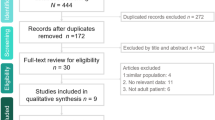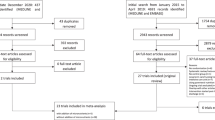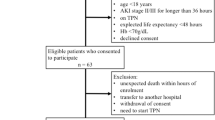Abstract
Objective: To assess vitamin B6 intake and status of critically ill patients. The relationship between vitamin B6 status indicators and the severity of illness and outcome in these patients was also examined.
Design: Prospective clinical study.
Setting: The study was performed at the Taichung Veteran General Hospital, in the central part of Taiwan.
Subjects: Ninety-four patients in the intensive care unit (ICU) entered the study and 46 patients successfully completed this study.
Interventions: No intervention.
Main outcome measures: Vitamin B6 intake was recorded for 14 days. Vitamin B6 status was assessed by direct measures (plasma pyridoxal 5′-phosphate (PLP), pyridoxal (PL), and urinary 4-pyridoxic acid (4-PA)) and indirect measures (erythrocyte alanine (EALT-AC) and aspartate (EAST-AC) aminotransaminase activity coefficient). The severity of illness (APACHE II score), the length of ventilation dependency, and the length of ICU and hospital stay were recorded.
Results: Patients had an adequate mean vitamin B6 intake (16.26±19.39 mg) during the 14 day study. Mean vitamin B6 intake was significantly higher on day 14 than on day 1 (P<0.001). However, plasma PLP and PL concentrations significantly decreased at the 14th day after admission (P<0.05). Erythrocyte alanine aminotransaminase activity coefficient and EAST-AC did not change significantly. Urinary 4-PA significantly increased at the 14th day (P<0.001). No significant relationships were found between APACHE II scores and clinical outcomes (the length of ICU and hospital stay, the length of ventilation dependency) of patients, vitamin B6 intake or status indicators.
Conclusions: Critically ill patients received nutritional support in the ICU, and had sufficient mean vitamin B6 intake and adequate vitamin B6 status. Therefore, the severity of illness and the results should not be affected by vitamin B6 status. However, we have noted that plasma PLP and PL concentrations significantly decreased while vitamin B6 intake significantly increased on day 14. Critical clinical conditions and complex metabolism in the critically ill may account for the reduction of plasma PLP and PL. Since vitamin B6 deficiency causes profound effects on immune system function, dietary or supplemented vitamin B6 intake is suggested for hospitalized patients.
This is a preview of subscription content, access via your institution
Access options
Subscribe to this journal
Receive 12 print issues and online access
$259.00 per year
only $21.58 per issue
Buy this article
- Purchase on Springer Link
- Instant access to full article PDF
Prices may be subject to local taxes which are calculated during checkout
Similar content being viewed by others
References
Axelrod AE . 1971 Immune processes in vitamin deficiency states Am. J. Clin. Nutr. 24: 265–271
Bassili HR, Deitel M . 1981 Effect of nutritional support on weaning patients off mechanical ventilators J. Parent. Enternal Nutr. 5: 161–163
Bottomley SS . 1983 Iron and vitamin B6 metabolism in the sideroblastic anemias In Nutrition in Hematology ed. J Lindenbaum New York: Churchill Livingston pp 203–223
Brown RR, Rose DP, Leklem JE, Linkswiler H, Anand R . 1975 Urinary 4-pyridoxic acid, plasma pyridoxal phosphate and erythrocyte aminotransferase levels in oral contraceptive users receiving controlled intakes of vitamin B6 Am. J. Clin. Nutr. 28: 10–19
Cochary EF, Gershoff SN, Sadowski JA . 1990 Aging and vitamin B-6 depletion effects on plasma pyridoxal 5'-phosphate and erythrocyte aspartate aminotransferase activity coefficients in rats Am. J. Clin. Nutr. 51: 446–452
Christman JW, McCain RW . 1993 A sensible approach to the nutritional support of mechanically ventilated critically ill patients Intensive Care Med. 19: 129–136
Driskell JA . 1994 Vitamin B6 requirements of humans Nutr. Res. 14: 293–324
Department of Health, Taiwan, ROC. 1993 Recommended Daily Nutrient Allowances 56–70 Department of Health, Taiwan, ROC
Edwards P, Liu PKS, Rose A . 1989 A simple liquid-chromatographic method for measuring vitamin B6 compounds in plasma Clin. Chem. 35: 241–245
Food and Nutrition Board, Institute of Medicine. 1998 Dietary Reference Intakes. Thiamin, Riboflavin, Niacin, Vitamin B6, Folate, Vitamin B12, Pantothenic Acid, Biotin, and Choline. Prepublication copy Washington, DC: National Academy Press
Gregory III JF, Kirk JR . 1979 Determination of urinary 4-pyridoxic acid using high performance liquid chromatography Am. J. Clin. Nutr. 32: 879–883
Hoorn RKJ, Flikweert JP, Westerink D . 1975 Vitamin B-1, B-2 and B-6 deficiencies in geriatric patients, measured by coenzymes stimulation of enzyme activities Clin. Chim. Acta 61: 151–162
Horrigan DL, Harris JW . 1968 Pyridoxine responsive anemia in man Vitam. Horm. 26: 549–568
Huang YC, Chen W, Evans MA, Mitchell ME, Shultz TD . 1998 Vitamin B-6 requirement and status assessment of young women fed a high-protein diet with varying levels of vitamin B-6 Am. J. Clin. Nutr. 67: 208–220
Huang YC, Yen CL, Cheng CH, Jih KS, Kan MN . 2000 Nutritional status of mechanically ventilated critically ill patients: comparison of different types of nutritional support Clin. Nutr. 19: 101–107
Knaus WA, Draper EA, Wagner DP, Zimmerman JE . 1985 APACHE II: a severity of disease classification system Crit. Care Med. 13: 818–829
Kretsch MJ, Sauberlich HE, Skala JH, Johnson HL . 1995 Vitamin B-6 requirement and status assessment: young women fed a depletion diet followed by a plant- or animal-protein diet with graded amounts of vitamin B-6 Am. J. Clin. Nutr. 61: 1091–1101
Larca L, Greenbaum DM . 1982 Effectiveness of intensive nutritional regimes in patients who fail to wean from mechanical ventilation Crit. Care Med. 10: 297–300
Leklem JE . 1988 Vitamin B-6 metabolism and function in humans In Clinical and Physiological Applications of Vitamin B6 eds. J Leklem & RD Reynolds 3–433 New York: Liss
Leklem JE . 1990 Vitamin B6: a status report J. Nutr. 120: 1503–1507
Louw JA, Werbeck A, Louw MEJ, Kotze TJvW Cooper R, Labadarios D . 1992 Blood vitamin concentrations during the acute-phase response Crit. Care Med. 20: 934–941
Lui A, Lumeng L, Aronoff GR, Li TK . 1985 Relationship between body store of vitamin B6 and plasma pyridoxal-P clearance: metabolic balance studies in humans J. Lab. Clin. Med. 106: 491–497
Lumeng L, Ryan MP, Li T-K . 1978 Validation of the diagnostic value of plasma pyridoxal 5'-phosphate measurements in vitamin B-6 nutrition of the rat J. Nutr. 108: 545–553
Merrill AH, Henderson JM . 1987 Diseases associated with defects in vitamin B6 metabolism or utilization A. Rev. Nutr. 7: 137–156
Pfitzenmeyer P, Guilland JC, d'Athis P . 1997 Vitamin B6 and vitamin C status in elderly patients with infections during hospitalization Ann. Nutr. Metab. 41: 344–352
Potera C, Rose DP, Brown RR . 1977 Vitamin B6 deficiency in cancer patients Am. J. Clin. Nutr. 30: 1677–1679
Powers JS, Zimmer J, Meurer K, Manske E, Collins JC, Greene HL . 1993 Direct assay of vitamins B1, B2, and B6 in hospitalized patients: relationship to level of intake J. Parent. Enteral Nutr. 17: 315–316
Ribaya-Mercado JD, Russel RM, Sahyoun N, Morrow FD, Gershoff SN . 1991 Vitamin B6 requirement in elderly men and women J. Nutr. 121: 1062–1074
Talbott MC, Miller LT, Kerkvliet NI . 1987 Pyridoxine supplementation: effect on lymphocyte responses in elderly persons Am. J. Clin. Nutr. 46: 659–664
Tébi A, Belbraouet S, Chau N, Debry G . 2000 Plasma vitamin, β-carotene, and α-tocopherol status according to age and disease in hospitalized elderly Nutr. Res. 20: 1395–1408
Vir SC, Love AHG . 1978 Vitamin B6 status of the hospitalized aged Am. J. Clin. Nutr. 31: 1383–1391
Woodring MJ, Storvick CA . 1970 Effect of pyridoxine supplementation on glutamic-pyruvic transaminase, and in vitro stimulation in erythrocyte of normal women Am. J. Clin. Nutr. 23: 1385–1395
Author information
Authors and Affiliations
Rights and permissions
About this article
Cite this article
Huang, YC., Lan, PH., Cheng, CH. et al. Vitamin B6 intakes and status of mechanically ventilated critically ill patients in Taiwan. Eur J Clin Nutr 56, 387–392 (2002). https://doi.org/10.1038/sj.ejcn.1601321
Received:
Revised:
Accepted:
Published:
Issue Date:
DOI: https://doi.org/10.1038/sj.ejcn.1601321
Keywords
This article is cited by
-
Vitamin B6 Reduces Neurochemical and Long-Term Cognitive Alterations After Polymicrobial Sepsis: Involvement of the Kynurenine Pathway Modulation
Molecular Neurobiology (2018)
-
Vitamin B6 supplementation increases immune responses in critically ill patients
European Journal of Clinical Nutrition (2006)



